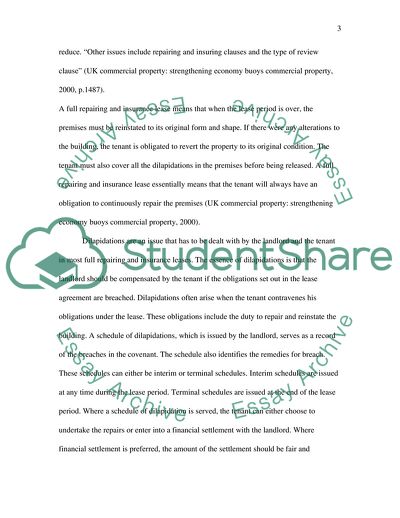Cite this document
(Full Repairing and Insuring Lease Case Study Example | Topics and Well Written Essays - 1750 words, n.d.)
Full Repairing and Insuring Lease Case Study Example | Topics and Well Written Essays - 1750 words. https://studentshare.org/design-technology/1848635-construction-law-architectural-technology
Full Repairing and Insuring Lease Case Study Example | Topics and Well Written Essays - 1750 words. https://studentshare.org/design-technology/1848635-construction-law-architectural-technology
(Full Repairing and Insuring Lease Case Study Example | Topics and Well Written Essays - 1750 Words)
Full Repairing and Insuring Lease Case Study Example | Topics and Well Written Essays - 1750 Words. https://studentshare.org/design-technology/1848635-construction-law-architectural-technology.
Full Repairing and Insuring Lease Case Study Example | Topics and Well Written Essays - 1750 Words. https://studentshare.org/design-technology/1848635-construction-law-architectural-technology.
“Full Repairing and Insuring Lease Case Study Example | Topics and Well Written Essays - 1750 Words”. https://studentshare.org/design-technology/1848635-construction-law-architectural-technology.


